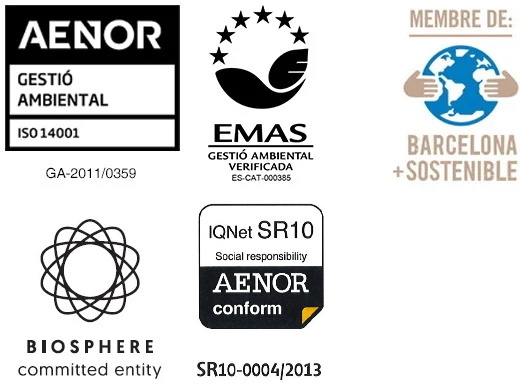Ferran Pérez and Xavier Abelló
In November 2020, the European Parliament declared a climate emergency and, one month later, the President of the European Commission presented the “European Green Deal” , which should turn Europe into the first climate-neutral continent by 2050.
The goals of this deal are for Europe to have a clean zero-emission economy, to protect our natural habitat and to lead climate action around the globe. In order to achieve them, it is necessary to tackle a change in the social and economic model that will allow the transition to a fully sustainable economy.
The Green Deal includes actions to promote the efficient use of resources that provide all sectors of the economy, especially those that produce more emissions: transport, energy and industry.
An annual investment of €260 billion is estimated to meet the 50% reduction in emissions by 2030 compared to 1990, and to achieve zero greenhouse gas emissions by 2050.

The first field of action is energy, given that the production and use of energy account for 75% of emissions. The main goals are the three “Ds”: decarbonisation, replacing the production of energy from fossil fuels (coal, oil and natural gas) with clean and renewable energy; decentralisation, focusing on local production and self-consumption to eliminate the losses caused by energy transport; and digitalisation, using technology and management tools to improve efficiency and adapt consumption to real needs.
In terms of industry, it is necessary to stimulate circular production to reach zero emissions, as it currently contributes 20% of emissions and uses only 12% of recycled materials. A transformation in food production is also foreseen, reducing the use of pesticides and increasing organic farming and livestock.
The third main issue is mobility. Transport accounts for 25% of EU emissions. In order to promote cleaner, more efficient and healthier transport, fossil fuel subsidies will have to be ended and the development of alternatives will have to be strongly fostered.
Finally, measures must be promoted to protect biodiversity and the ecosystems, improving the quality of forests and oceans, and increasing biodiversity in urban areas.
So as to achieve this ambitious project, a proactive, exemplary and dynamic action by the public sector that facilitates the accession of the private sector is essential.
In line with this, in May 2021, the Spanish Congress of Deputies approved the Law of Climate Change and Energy Transition which transposes and improves the objectives set by the EU.
For its part, the Museu Nacional understood the climate emergency situation and assumed its responsibility by introducing sustainability into its strategy. In 2010 it was a pioneer in the implementation of an environmental management system in the museum sector and achieved the environmental certifications ISO 14.001 and EMAS in 2011 and 2012, respectively, with the aim of reducing its impact and undertaking the transition to a sustainable museum activity. Also, in 2019, through the maintenance company Sacyr Facilities, it implemented an ISO 50.001 energy management system in the building.

If we compare the data obtained in the period 2009-2019, before the pandemic, over a ten-year period the Museu Nacional managed to reduce its CO2 emissions by 63%, reducing energy consumption by 48% through measures to rationalise and optimise the facilities and the application of good environmental practices.
Furthermore, the Museu Nacional has also standardised the introduction of environmental criteria in the procurement of goods and services, with special attention to the origin of raw materials, the reuse of materials and waste management. At the same time, it fosters and facilitates the environmental revision of the projects that it promotes and carries out, proposing sustainable alternatives that reduce their impact and involving all areas of the Museum in a goal that is common and cross-cutting.
On the website of the Museu Nacional you can find the Environmental Declaration 2020 which includes the museum’s annual diagnosis and action plan, based on environmental dissemination, the prevention of pollution and ongoing improvement.

To find out more:
Social and environmental responsibility







